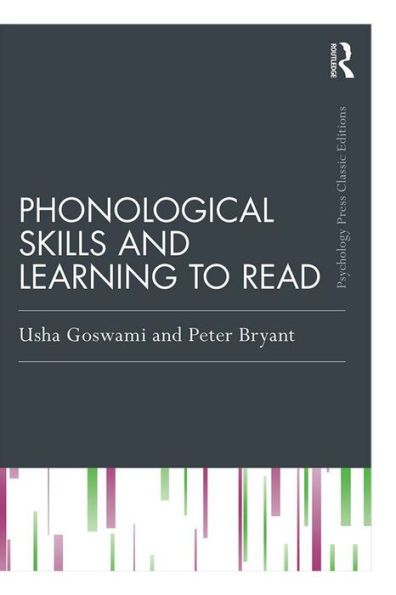In this classic edition of their ground-breaking work, Usha Goswami and Peter Bryant revisit their influential theory about how phonological skills support the development of literacy. The book describes three causal factors which can account for children’s reading and spelling development:
- pre-school phonological knowledge of rhyme and alliteration
- the impact of alphabetic instruction on knowledge about phonemes
- links between early spelling and later reading.
This classic edition includes a new introduction from the authors which evaluates research from the past 25 years. Examining new evidence from auditory neuroscience, statistical modelling and orthographic database analyses, as well as new data from cognitive developmental psychology and educational studies, the authors consider how well their original ideas have stood up to the test of time.
Phonological Skills and Learning to Read will continue to be essential reading for students and researchers in language and literacy development, and those involved in teaching children to read.
In this classic edition of their ground-breaking work, Usha Goswami and Peter Bryant revisit their influential theory about how phonological skills support the development of literacy. The book describes three causal factors which can account for children’s reading and spelling development:
- pre-school phonological knowledge of rhyme and alliteration
- the impact of alphabetic instruction on knowledge about phonemes
- links between early spelling and later reading.
This classic edition includes a new introduction from the authors which evaluates research from the past 25 years. Examining new evidence from auditory neuroscience, statistical modelling and orthographic database analyses, as well as new data from cognitive developmental psychology and educational studies, the authors consider how well their original ideas have stood up to the test of time.
Phonological Skills and Learning to Read will continue to be essential reading for students and researchers in language and literacy development, and those involved in teaching children to read.

Phonological Skills and Learning to Read
188
Phonological Skills and Learning to Read
188Related collections and offers

Product Details
| ISBN-13: | 9781317441540 |
|---|---|
| Publisher: | Taylor & Francis |
| Publication date: | 05/19/2016 |
| Series: | Psychology Press & Routledge Classic Editions |
| Sold by: | Barnes & Noble |
| Format: | eBook |
| Pages: | 188 |
| File size: | 4 MB |
